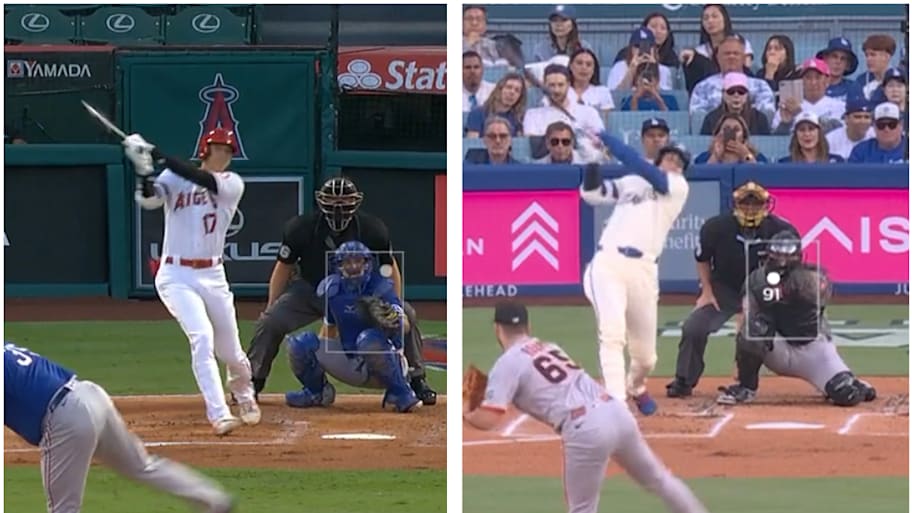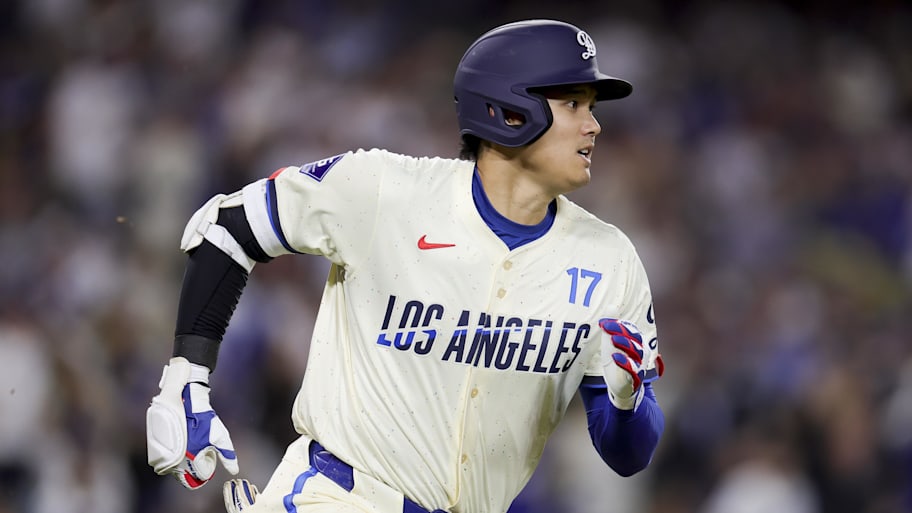In December of 2012, a two-way high school star named Shohei Ohtani shocked Japan by announcing he was signing with the Nippon Ham Fighters, the team that drafted him, rather than signing with a Major League Baseball team as an international free agent.
“When they first selected me, there was zero chance of me signing with them,” Ohtani said then.
Hideki Kuriyama, the Fighters manager, challenged Ohtani to establish himself as a two-way professional in Japan, rather than accept the specialization that likely awaited the teenager in the states.
“He told me that he wanted me to travel down a path no one else walked down,” Ohtani said then.
Since then, Ohtani has spent his entire professional life taking the road not taken. He did it again Saturday with career home run No. 250.
SHOHEI DOES IT AGAIN! pic.twitter.com/hxgNP8hwvj
— Los Angeles Dodgers (@Dodgers) June 15, 2025
Another milestone, another new path.
Having swiped his 150th career base in April, Ohtani reached 250 home runs and 150 stolen bases faster than any player in history: 945 games, or 929 games if you don’t count the games in which he pitched but did not hit.
He leads his league in home runs, slugging, total bases and OPS for a third straight year while on pace to become the first player in 94 years to score 160 runs—and, oh, by the way, while throwing simulated games as he recovers from elbow surgery so he can join the Los Angeles Dodgers’ rotation … which will happen Monday night!
That’s right, on Sunday night the team suddenly announced the NL home run leader and Dodgers’ leadoff hitter will make his Dodgers pitching debut at Dodger Stadium against the San Diego Padres on Monday. Two-way Shohei is back. It will be his first time pitching in any kind of competitive game in 662 days—no minor league rehab starts for The Unicorn!—and he will do it against the NL West rival Padres.
The vibe will be electric. We have never seen a greater all-round talent in baseball. And now Ohtani is back to what he calls his “norm” as a two-way player. He is not stretched out yet to go more than three or four innings, but the Dodgers are adding a dominant arm at a time when they need one. Let the fun begin.
But for now, let’s use the 250-home run milestone as a marker to take stock of where Ohtani ranks just as a hitter.
Who are the best historical comps for Ohtani?
The home run/stolen base combo is nice, but let’s go full Bingo! card here, since Ohtani is the rare offensive player who has power and speed at elite levels. Let’s find the only players through 945 games with 200 homers, 150 steals, 150 doubles and 40 triples.
Here is the entire list. I threw in extra-base hits just to reinforce how alike Ohtani is to Willie Mays as a hitter at this point in their careers:
Through 945 games: 200 HR, 150 SB, 150 2B, 40 3B
What kind of pitches does Ohtani hit most for home runs?
Ohtani has hit slightly more than half his 250 home runs off fastballs, 54.4%. That’s not a surprise because he sees 52.6% fastballs (well below the major league average of 57.2% over the course of his career).
The surprise is that Ohtani sees 29% breaking pitches, but hits 32.4% of his home runs off breaking pitches, his biggest difference in power by pitch types.
Ohtani by pitch type, career
Ohtani is a great in-zone breaking ball hitter. Over the past three seasons he slugs .834 on in-zone spin. Next best in MLB is Gunnar Henderson, who is nowhere near him at .712 (minimum 5,000 total pitches).
How has Ohtani evolved as a hitter?
Ohtani is only now entering his prime power years. He has become a more dangerous power hitter in recent years by mastering the art of getting the ball airborne to the pull side.
Check out this growth chart when it comes to pull-side power:
Ohtani pulled home runs
How did he pull off this evolution into a pull-side monster?
Let’s compare two pull-side Ohtani home runs, one from 2020, before he began to truly grow into his pull power, and his 250th home run from Saturday:

Setup: The changes are more subtle than drastic, but they are significant. He is now more upright, more open with his feet, the head is more turned to get both eyes on the ball easier and his back elbow is slightly higher to better pre-set the load position of his wrists.

Swing: He now stays behind the ball (which you can tell from his head position), has a much firmer front side (he eliminated the drift into the ball you see in 2020), has more extension through the ball and holds off rolling his top wrist much later to create more backspin. It’s a much more powerful, efficient swing.
How else has he evolved as a hitter?
By starting more upright and keeping his head behind the baseball, Ohtani has become the best high-strike slugger in baseball. Do not try to challenge this man with high fastballs.
Ohtani vs. high strikes
What is the Tropic of Ohtani?
It’s the key latitude for pitchers. Think of a line two feet off the ground, defining roughly the bottom quarter of the strike zone. Call it the Tropic of Ohtani. To limit Ohtani’s power, a pitcher must execute at this line and lower.
Why? Ohtani is a tall hitter who hits from an upright posture. When he struggles, he swings at too many low pitches before two strikes. Dodgers manager Dave Roberts likes Ohtani to take pitches down, even if they are strikes, early in the count. He knows Ohtani should hunt pitches where his slug is—and that’s not down. He does pitchers a favor by not waiting for something even slightly elevated.
If you want to turn Ohtani into a .192 hitter, keep the ball on the bottom rail of the strike zone. Here is your map of the Tropic of Ohtani:
Ohtani by pitch height, 2021-25

What are Ohtani’s chances of hitting 500 home runs?
Ohtani is the 65th hitter to reach 250 home runs by his age 30 season. Eight are still active (Ohtani, Nolan Arenado, Mookie Betts, Bryce Harper, Manny Machado, Matt Olson, Giancarlo Stanton and Mike Trout).
Of the 57 retired players who reached 250 homers by age 30, only 24 of them hit another 250 homers. That’s only 42% of the young sluggers who get halfway there by age 30 who make the 500 Home Run Club.
The 30U members of the 250 Club who finished with the fewest home runs were Prince Fielder and Jay Bruce (319), Troy Glaus (320) and Justin Upton (325). The biggest head start by those who came up short were Andruw Jones (368 though age 30), Juan Gonzalez (362) and Adam Dunn (354).
So among players who get halfway to 500 by 30, more players fall short than get in the 500 Club. Historically speaking, that would seem to put the odds against him. But if we’ve learned anything about Ohtani it is that he is one of one. Precedent does not apply. With his evolution as a hitter, Ohtani is on his own road toward 500 and beyond.
This article was originally published on www.si.com as Shohei Ohtani’s 250 Career Home Runs Put Him in Elite Company Yet Again.
